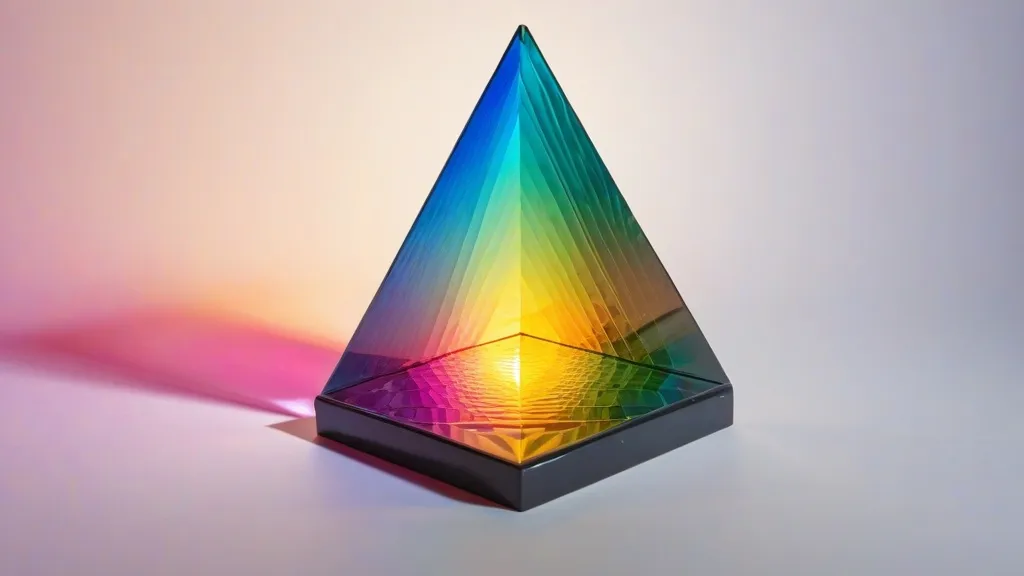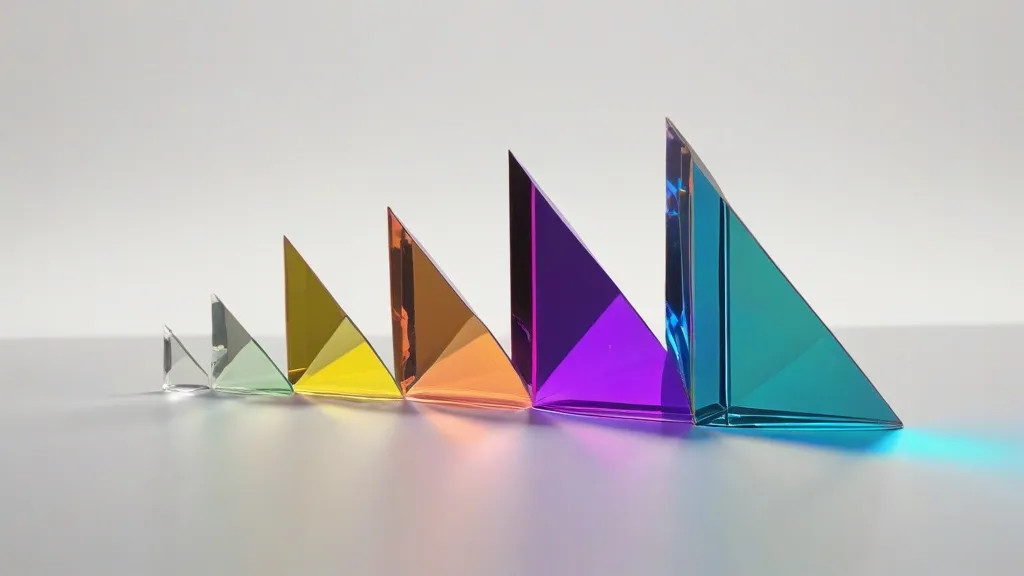I’ve spent years chasing how things split, change, and re-join. That’s what I mean when I say prismatic evolution. Take light, refraction, dispersion, color spectrum, the whole rainbow-soup of optics—and then think about how ideas, species, games, and trends do the same split-and-merge dance.
I know, it sounds like a TED talk teaser that got lost in 2016. But stick with me. I’ve used this lens for more than a decade. It helps me see how stuff grows in many directions at once, then settles into something new. Simple. Not easy.
What I’m Actually Talking About

Picture a glass wedge. A prism. White light goes in, colors come out. That’s the model. A system gets pressure. It splits into different “colors”—features, ideas, traits. Over time, those branches compete or blend. The result looks obvious in hindsight. It wasn’t at the start.
When people ask me for a source, I point them to a basic explainer on what a prism is. Start with the tool. Then steal the pattern for everything else. Like I do. Shamelessly.
There’s a physics term here that I love because it sounds like a fancy dessert: dispersion. It’s just different wavelengths bending by different amounts. Red goes one way. Blue another. In my head, that’s like teams in a company when the strategy gets murky. Sales turns red. Engineering goes blue. Product is—green? Somehow sticky.
Where I See It (Everywhere)
In nature: feathers with iridescence, oil on water, soap bubbles. Structural color beats dye. It’s physics showing off. Species do this too. One group meets a new niche. Traits split. Some paths die. Others lock in. Hello, adaptive coloration and phenotypic variation.
In culture: genres split like light through glass. One movie sparks ten copycats. One game mechanic begets a sub-genre with a scary Discord. Over a few years, the mess settles into “the way.” Until it cracks again. Repeat.
In teams: one new idea acts like white light. People refract it through their roles. Marketing sees story. Ops sees risk. Finance sees a headache. The blend you finally ship? That’s the spectrum your users can actually see.
Why This Helps My Brain
Because I get less mad at change. And a little more curious. If I expect branching, I can map options: which color paths exist, which are missing, which might merge later. Also I stop yelling “why is this chaotic?” and start asking “which wavelength am I watching?” Much better for my sleep.
A Tiny Table You Can Steal
| Term | Plain meaning | Where I spot it |
|---|---|---|
| Refraction | Bending when something enters a new medium | Teams shifting goals; users trying a new tool |
| Dispersion | Different parts bend by different amounts | Features evolve unevenly; markets split |
| Spectrum | A range of options, not just two | Customer needs; genre sub-types; price tiers |
| Iridescence | Color changes with angle | Opinions that flip by context; brand perception |
The “Oh, That’s Why” Moments

In my experience, the fastest way to understand this stuff is to collect examples. I keep a little list. I treat good curation like a lab notebook. If you like that too, peek at these game feature sites that track trends and how they branch. Same trick, different field.
I’ve watched trends split cleanly—like a bright spectrum. And I’ve watched them turn into brown mush. That happens when everything blends into “meh.” Tip: if your mix turns to sludge, re-split it. Name the colors again. Decide which ones matter.
What I Think Is Going On Underneath
Pressure, constraints, and feedback. That’s the whole play. New pressure hits. Parts bend differently. Some paths get more light (funding, attention). Others dim. Then feedback loops kick in—users pick a lane, ecosystems reward it, moats grow. You get a new normal—until the next pressure hits.
I used to believe this was all smooth and wise and nature-approved. Then I worked with real teams. Now I know it’s noisy. Half luck, half timing, half someone being stubborn at the right moment. Yes, that’s three halves. Math is a suggestion.
A Quick Gamer Sidebar (because I am who I am)
Games do prismatic change so fast you can watch it live. One patch. Boom—roles shift, builds split, metas reform. If you enjoy the dance, you’ll love nerdy takes on synergy and meta tips. Even if you don’t play, the pattern is pure optics: pressure in, spectrum out.
Sometimes I explain this to students with a rainbow demo. It’s simple, doable, and looks cool. Find a sunny window. Use a cheap prism or even a glass of water. Turn it slowly. You’ll see red, orange, the whole crew slide along the wall. It’s quiet science. No hype. Just the spectrum doing its thing.
My Field Notes After a Decade
I’ve always found that the loudest person in the room is rarely the deepest wavelength. The deep stuff sits at the edges. “Invisible” until the angle is right. That’s true for ideas and for people. Make space for the long waves.
Second thing: I never trust a single plot line. If it’s only one color, it’s not the full picture. I look for at least three viable branches before I commit. Same with roadmaps, same with research.
Third thing: don’t overfit. The prism lens is a tool, not a religion. But it beats a coin flip. Every time.
How I Practice This (Tiny Habits)
- When a choice feels binary, I list the middle shades. Usually 5–7 options appear.
- When a project feels messy, I label the colors. “This is our red track. This is blue.” Helps the team breathe.
- When a plan stalls, I change the angle. New input, new medium, new constraint. Watch the bend.
If you like hands-on learning, I stash small how-tos and references in my own pile of guides and tutorials. Bite-size is how I keep my brain from melting.
Nature’s Running Joke
Rainbows are only “there” if you stand in the right spot. Move, and they move. Change the angle, change the show. Our projects act like that too. Stakeholders stand in different places. They swear they see different colors. They’re not wrong. They’re just standing elsewhere.
By the way, when I use the phrase again—prismatic evolution—I mean that split-and-merge dance across time. In teams, tools, even art styles. It’s just a clean, sticky way to hold a messy process in my head without crying into my lukewarm conference coffee. Again.
Pattern-Spotting for Nerds (and Me)
Long-form thinking helps. Short takes miss the branches. If you want to see how things unfold, read more of the slow stuff, like reflective pieces and, yes, long game reviews. Even when I disagree, I learn where the spectrum widened.
And when my brain gets stuck in one lane, I reach for puzzles. They force side angles. They make me try another path. They also remind me that easy answers are boring. If that sounds like your jam, wander through some puzzle games and see how one rule splits into a dozen smart levels.
Mini Checklist I Use Before I Commit to a Path
- Did I name at least three color paths?
- Do I know what pressure pushed the split?
- Which branches got too much light? Which got none?
- What would change if I add a new medium? (Budget, tool, team, time.)
- Where’s the feedback loop hiding?
If you’re more into the “watch and compare” vibe, I sometimes skim curated lists and feature sites guides to see which trends get boosted. It’s a decent way to catch early colors before they hit the mainstream wall.
Tiny Experiments You Can Actually Do
- Water glass rainbow: Shine a flashlight through a glass at an angle onto white paper. Note the colors. Change the angle. Note the change.
- Decision prism: Take a decision you’re stuck on. Write three versions. Bold one key difference in each. Ask two friends which “color” they’d pick and why.
- Feedback lens: Launch a tiny prototype to two small groups. Give each a different constraint. Watch how the outputs split.
I’m not trying to make this mystical. It’s just a helpful way to see splits and blends. Once you start spotting it, you can’t unsee it. Which is both fun and a little annoying. Kind of like learning the four-note pattern in every pop song. Sorry in advance.
FAQs (the honest kind)
- Is this just a fancy metaphor? Mostly, yes. But a useful one. It helps me map choices and branches without pretending the future is a straight line.
- How is this different from regular “evolution” talk? I focus on the split (the spectrum) and the blend (the new normal). It’s evolution with a clear visual.
- Can I use this for school projects? Please do. Draw the spectrum of options, then explain why you chose your lane. Teachers love clear thinking.
- What if everything turns into mush? Re-split it. Name the parts. Put some on pause. Shine more “light” (time, care) on the few that matter.
- Do I need to know physics? Nope. But if you’re curious, look up basic prisms and dispersion. The demos are easy and actually pretty.

I’m Darius Lukas. On my blog, I break down what makes games tick with honest reviews, deep analyses, and guides to help you conquer your next virtual challenge.




This article beautifully explains how ideas evolve and merge, much like light through a prism. Fascinating!
How can we apply the concept of prismatic evolution to personal growth and decision-making?